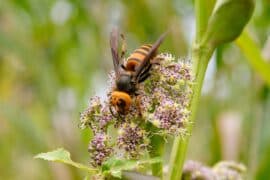Sand dropseed
(Sporobolus cryptandrus)

Description
Sporobolus cryptandrus is a species of grass known as sand dropseed. It is native to North America, where it is widespread in southern Canada, most of the United States, and northern Mexico. Sporobolus cryptandrus is a perennial bunchgrass forming a tuft of stems growing up to a meter long, erect to decumbent in form. The stem bases are thick but not hard or woody. The leaves are up to 26 cm (10 in) long and rough-haired along the margins. Some stand out from the stems in a perpendicular fashion. The inflorescence is dense and narrow when new, spreading out and becoming diffuse, with some branches sticking straight out, with age. The base of the inflorescence is often sheathed within the top leaf, which spreads out beside it. The grass produces abundant seeds; an individual inflorescence is capable of bearing 10,000 seeds. Sand dropseed is a common grass in many types of North American prairies and grows in a wide variety of other habitats, including disturbed areas such as roadsides. The seeds of this grass provide food for small birds and mammals, including scaled quail (Callipepla squamata) and black-tailed prairie dogs (Cynomys ludovicianus). Sporobolus is a nearly cosmopolitan genus of plants in the grass family. The name Sporobolus means "seed-thrower", and is derived from Ancient Greek word σπόρος (spóros), meaning "seed", and the root of βάλλειν (bállein) "to throw", referring to the dispersion of seeds. Members of the genus are usually called dropseeds or sacaton grasses. They are typical prairie and savanna plants, occurring in other types of open habitat in warmer climates. At least one species (S. caespitosus from Saint Helena) is threatened with extinction, and another (S. durus from Ascension Island) is extinct. While some dropseeds, such as prairie dropseed (Sporobolus heterolepis), make nice gardening plants, they are generally considered to make inferior pastures, but seeds of at least some species are edible and nutritious; they were used as food, for example, by the Chiricahua Apaches. Other species are reported to be used as famine foods, such as Sporobolus indicus in parts of the Oromia Region of Ethiopia, where it is known as muriy in Oromiffa. Known as popote de cambray, Sporobolus grasses are used in popotillo art or straw mosaics, a Mexican folk art with pre-Columbian origins.
Taxonomic tree:







